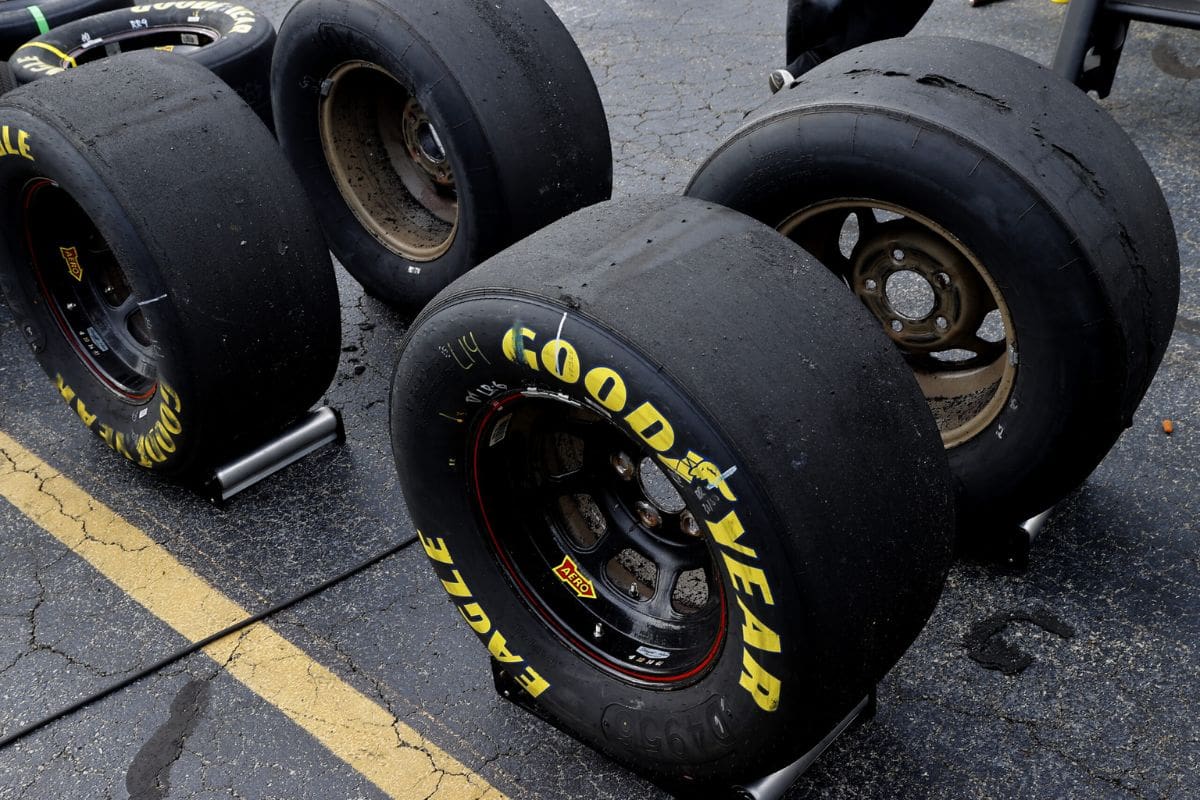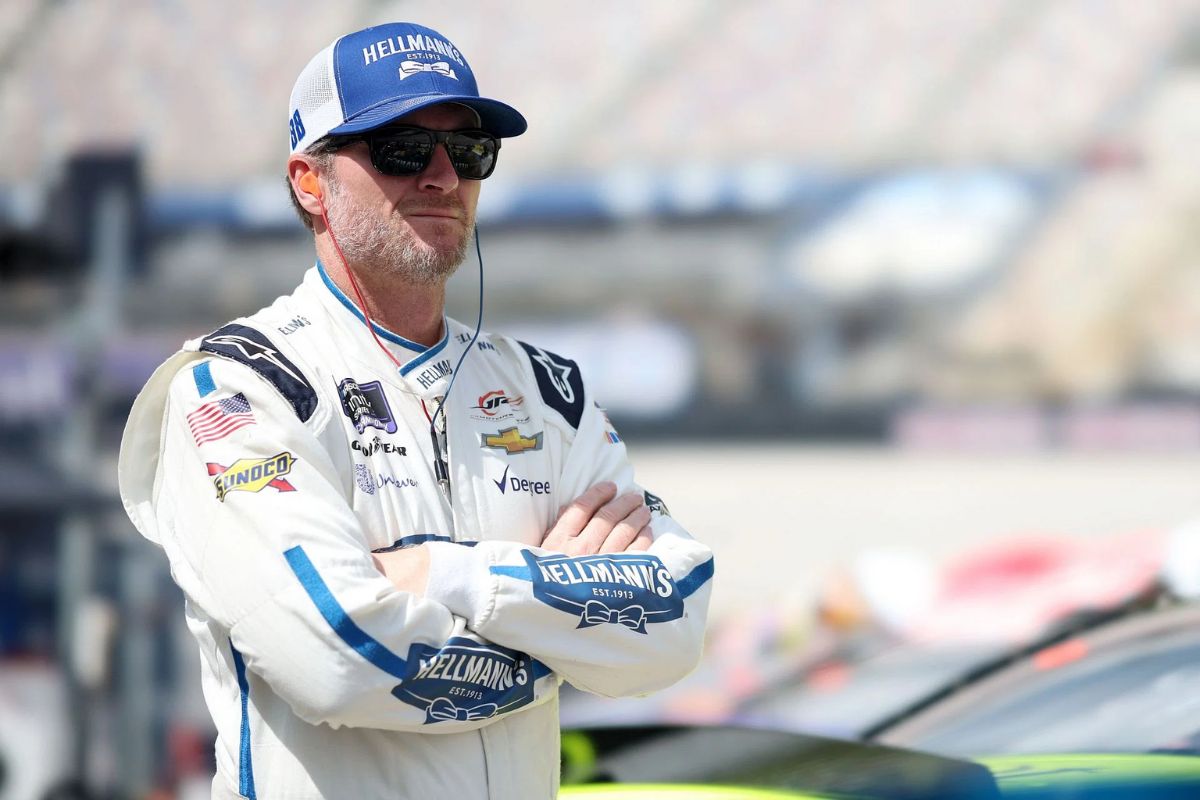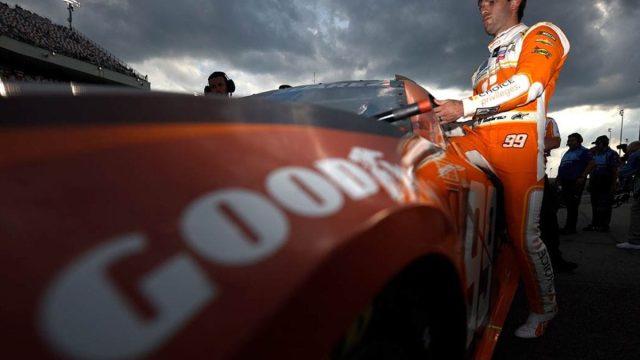Dale Jr’s Dispute with Daniel Suarez: Dale Earnhardt Jr.’s recent critique of Daniel Suarez following the turbulent Richmond race raises crucial questions about accountability in competitive motorsports. By attributing blame to Suarez for the chaotic circumstances, Earnhardt Jr. provokes a broader examination of whether aggressive driving is a byproduct of the sport’s inherent pressures or indicative of character flaws among drivers. This discourse highlights the complexities of race strategy and driver behavior and invites an exploration of the repercussions of such accusations on personal reputations and the sport’s integrity.
Key Highlights
- Dale Earnhardt Jr. criticized Daniel Suarez for his aggressive driving, claiming it contributed to multiple incidents during the Richmond race.
- Suarez defended his actions, emphasizing the competitive nature of racing and the need for communication among drivers.
- The controversy highlights ongoing tensions in NASCAR, affecting team strategies and driver reputations moving forward.
- Historical patterns suggest that NASCAR may implement rule changes in response to aggressive driving incidents like those involving Suarez.
- Fan reactions are divided, with some supporting Dale Jr.’s critique while others back Suarez’s competitive approach on the track.
NASCAR and Goodyear’s Short-Track Solution
NASCAR and Goodyear have made considerable strides toward addressing the longstanding challenges of short-track racing, particularly with the introduction of a new tire compound that boosts grip and promotes overtaking. This initiative comes in response to persistent driver complaints regarding the lack of passing opportunities and the general quality of racing with the Next Gen car.
With engine power improvements deemed unfeasible, tire innovation emerged as a critical solution for reviving the short-track experience.
The recent race at Richmond Raceway showed the potential of this new softer compound, which was initially tested during the All-Star race at North Wilkesboro Speedway. Teams were equipped with two sets of this option tire, leading to notable increases in grip and speed, thereby facilitating overtaking maneuvers that were previously scarce.
This positive trend was prominently shown by Daniel Suarez and the #99 team, who capitalized on the improved tire performance.
However, while the initial results are promising, skepticism persists about whether these changes will lead to a sustained improvement in short-track racing. The complex interplay between tire performance, driver skill, and race strategy continues to shape the narrative of NASCAR‘s evolution.
Although the new tire compound signals progress, it remains to be seen whether it will fundamentally alter the competitive landscape, as some key figures in the sport express doubts about its long-term efficacy.

Dale Earnhardt Jr.’s Take on the New Tires
The introduction of the new softer tire compound aimed to improve racing dynamics by empowering teams and drivers with tactical choices. However, Dale Earnhardt Jr. has expressed concerns about the efficacy of this strategy, identifying a notable flaw in the implementation of the option tires. The premise was straightforward: teams could utilize the tire wear to devise ideal race strategies, particularly with two sets of tires at their disposal.
Daniel Suarez’s early adoption of the red option tire at Richmond Raceway initially showed the potential advantages, allowing him to surge from outside the top 15 to claim the lead and secure his first stage win of the season. Leading 93 laps highlighted the tire’s capability to boost performance, yet this advantage was fleeting, as Suarez ultimately finished only in the top 10. This inconsistency raises questions about the reliability of the softer compound under race conditions.
Earnhardt Jr. emphasizes that while the tires are designed to encourage tactical variability, the execution has not translated into sustained competitive advantage. The fluctuating performance of teams relying on these tires suggests a disconnect between intent and outcome.
Dale Jr.’s Criticism of the Tire Strategy
Dale Earnhardt Jr.’s critical perspective on the tire strategy highlights a considerable concern regarding the efficacy of the new softer tire compounds in altering race outcomes. His observations during the recent race reflect a skepticism that the introduction of these compounds will greatly affect the competitive landscape. Remarkably, he pointed out how Daniel Suarez’s fleeting success quickly dissipated once he shifted to a different tire, ultimately reverting to his original position. This scenario suggests that the potential for varied strategies may not be as influential as envisioned.
Earnhardt Jr. articulated this concern in his podcast, “The Dale Jr. Download,” indicating that while some teams may initially experiment with different tire strategies, the collective intelligence and adaptability of teams will likely lead them to adopt uniform approaches. He expressed doubts that mixing tire compounds, particularly on short tracks, would alter the competitive dynamics as effectively as intended.
I mean, there were some teams doing something differently, like the 99 (Daniel Suarez) right? He drives upto the front, but eventually, I mean when he got on the other tire and everyone else had the soft, he goes right back to where he was. I don’t expect it to really alter the results because I think these teams get smart and they’ll all end up on the same plan.” – (dale jr.)
Despite his skepticism, he did acknowledge the potential merit of considering the softer tire as a primary compound for future races. This insight invites further discussion on whether the current tire strategy truly improves the racing experience or merely maintains the status quo.

The Positives of the Softer Tire Compound
Innovation in tire technology can greatly improve the racing experience, and the recent introduction of the softer tire compound shows this potential. The softer tire improves grip and promotes a more dynamic racing environment. This compound allows for increased passing opportunities and an evolution of race strategies, as teams have to adapt to the tire’s performance characteristics throughout the event.
One of the most notable advantages of the softer tire compound is its ability to create varied racing strategies. Teams are compelled to make tactical decisions regarding when to pit and which tire to utilize, resulting in a more engaging spectacle for fans.
The implementation of this compound has shown a reduction in tire-related incidents, which is a considerable win for all drivers and fans. This reliability raises the confidence of the competitors and guarantees that the focus remains on the race, rather than tire failures.
Furthermore, the suggestion by Daniel Suarez and Kyle Busch to extend the use of this tire to other tracks indicates a growing recognition of its benefits. Dale Jr.’s endorsement of such innovations highlights a broader consensus within the NASCAR community that the softer tire can indeed raise the racing product.
Dale Jr.’s Hope for Future Tire Improvements
Building on the positive reception of the softer tire compound, there is growing optimism within the NASCAR community regarding future tire improvements. Dale Earnhardt Jr. has expressed hope that this recent development will encourage NASCAR and Goodyear to push the boundaries of tire technology further, ultimately improving the racing experience. His assertion that the sport has historically been slow to adopt necessary changes highlights a critical need for innovation.
“That’s kind of my point is, like I’m hoping that they’re learning how aggressive they can actually get … It’s taken too long to do a lot of things in this sport. It takes a lot of time to approve parts, to get parts in manufacturing, to get tires to evolve and keep up with the cars with the tracks and this is going to accelerate that a lot. So I think NASCAR and Goodyear can now go back to Richmond or Martinsville and say, We’re just gonna run the same soft tire get rid of the hard.” – (dalr jr.)
As the industry reflects on the implications of softer tires, the potential for more aggressive compound development is promising. Junior’s remarks suggest a shift in mindset that could expedite tire evolution, which may lead to a more dynamic racing environment. He envisions a future where tracks like Richmond and Martinsville could benefit from a universal soft tire, eliminating the outdated hard compound.
| Tire Type | Key Features |
|---|---|
| Soft | Improved grip, faster laps |
| Hard | Durability, slower speeds |
| Intermediate | Versatile for mixed conditions |
| Rain | Specialized for wet tracks |
The table above delineates the characteristics of different tire types, emphasizing the advantages of adopting a softer compound. As NASCAR goes through this potential evolution, the effectiveness of tire strategies will certainly shape competitive dynamics. The community watches keenly, anticipating how this renewed focus on tire improvement will unfold in upcoming races, ultimately transforming the landscape of stock car racing.

News in Brief: Dale Jr’s Dispute with Daniel Suarez
The controversy surrounding Dale Earnhardt Jr.’s accusations against Daniel Suarez emphasizes the complexities of competitive dynamics within NASCAR. While Suarez’s aggressive driving style may invite examination, attributing the chaos at Richmond solely to his actions oversimplifies the multifaceted nature of racing.
This incident highlights the need for a distinct understanding of driver behavior and the impact of tire tactics on race outcomes. Future discussions should focus on fostering a competitive environment while promoting sportsmanship and tactical innovation.
ALSO READ: Denny Hamlin Accuses Goodyear of Deception with Old Tires
